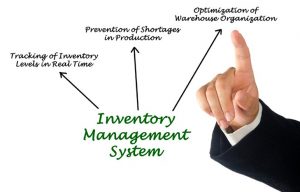Published January 2018, GPOptimizer Winter Edition
By Frances Donnelly, C.Q.P.A.

The success of new manufacturers is often due to their responsiveness to their customers’ needs. New organizations start small and that means there is an ease of access that allows them to communicate effortlessly with customers and vendors. After all, if everyone fits in the room at the same time, then dialog is immediate and seamless. When growth occurs, this smooth and easy communication is frequently lost and needs to be replaced with other tools.
In early growth mode, you might observe that the members of staff that you considered the most valuable are the ones who seem to be most aware of what is going on around them. We’ve all met these “finger on the pulse” people. They know to reorder materials because they recognize a customer ordering pattern that no one else has documented. Or they can reschedule production processes in their heads so that a critical need for a favored customer is handled expeditiously. When it comes to consistently meeting customer expectations, the tribal knowledge of these individuals is the lynch-pin of operational success.
But what happens when business volumes pick up? These owners of tribal knowledge find they don’t have time to touch every piece of paper or participate in every discussion about every order or production problem.
When this shift occurs, if an organization is lucky there will be one or two astute process-owners who start to create more formality around their tasks. Perhaps they create a check list. Someone else on the team will see the value in the checklist and ask for a copy. To provide greater access to the shared checklist, it finds its way to a network drive, alongside other shared documents and a heavily-guarded spreadsheet or three. These initiatives will create structure around processes and begin to replace informal organic communication with structured processes and data.
Done well, these processes will sustain the organization as it develops. At the end of this stage, we will see that growth is threatened by something called “islands of data”. The earmark of this stage is when we notice that critical business data is not easily shared or distributed because individuals or departments are managing their responsibilities with non-integrated tools. To move forward, it will take a management-led directive to shift to tools that support the next level of change: the use of integrated software for business.
Not sure if your organization has reached this growth challenge yet? Take our quiz to find out.
Much has been researched and written on the challenges of this shift. As someone who frequently meets with organizations contemplating such an effort, I can share what I believe are the top two reasons that moving to integrated solutions doesn’t occur or doesn’t occur easily. These two reasons are cost and people.

Cost is pretty obvious. The deployment of integrated software solutions, whether across the entire entity or in a new targeted function like inventory management or Quality, is always more expensive than was originally estimated. Utilizing cloud solutions reduces upfront expense by dispersing the software licensing portion of the cost across the lifetime of ownership. But the more significant area of cost is for the training of staff and the activity of implementing the solution in a manner that mirrors the specific business processes. Rarely does management investigate the purchase of a software solution fully-cognizant of the total project cost. The prevalence of “apps” has also had a somewhat misleading impact on how the cost of integrated solutions is viewed. It comes as a surprise to some decision-makers that utilizing a smartphone- or tablet-based “app” can often require the purchase and deployment of an integrated solution for managing a larger area of functionality, like inventory.
The reason people are considered a hindrance might be better stated as resistance. We can see resistance from the very moment the idea of an integrated solution is suggested. If we take an inventory or Quality function as an example, we can easily identify the integration benefits. With an integrated system, one inventory transaction updates all the needed records in real-time; the overall expenses of running the business are reduced. In the Quality function, preparing and delivering Certificates of Analysis from data maintained in a centralized system is significantly more accurate and efficient than managing paper records. In spite of these kinds of clear benefits, resistance remains strong because people have more confidence in their existing tools and existing skill sets. They are not eager to run the risk of trying something new. They balk at the idea of being held responsible for new skills without adequate training. We also see individuals who are very expert in their individual tasks resist change because they are allowed to value too highly their individual efficiency. Getting these people to see that their individual efficiency is a hindrance to the organization’s broader need for shared data is always a challenge.
We have two short videos, one on successfully integrating perpetual inventory and another on creating Certificates of Analysis, where we demonstrate how our integrated software solutions benefit the efficiency of an organization. Growth is an important goal for business entities. To be effective, that growth must come with improved efficiency. We believe that eliminating duplicate work by using integrated software solutions is one of the simplest ways to reduce operational cost and to achieve that improved efficiency.
If your organization is struggling with how to meet your growth goals while concurrently reducing cost of operations for manufacturing and Quality, please contact us at www.hzs.com or www.qualityessentialssuite.com. We can support your efforts by completing a Business Process Review and Gap Analysis and by providing your organization with formal tools to help in your integrated software evaluation processes.
© Horizons International, LLC
Published GPOptimizer January 2018
